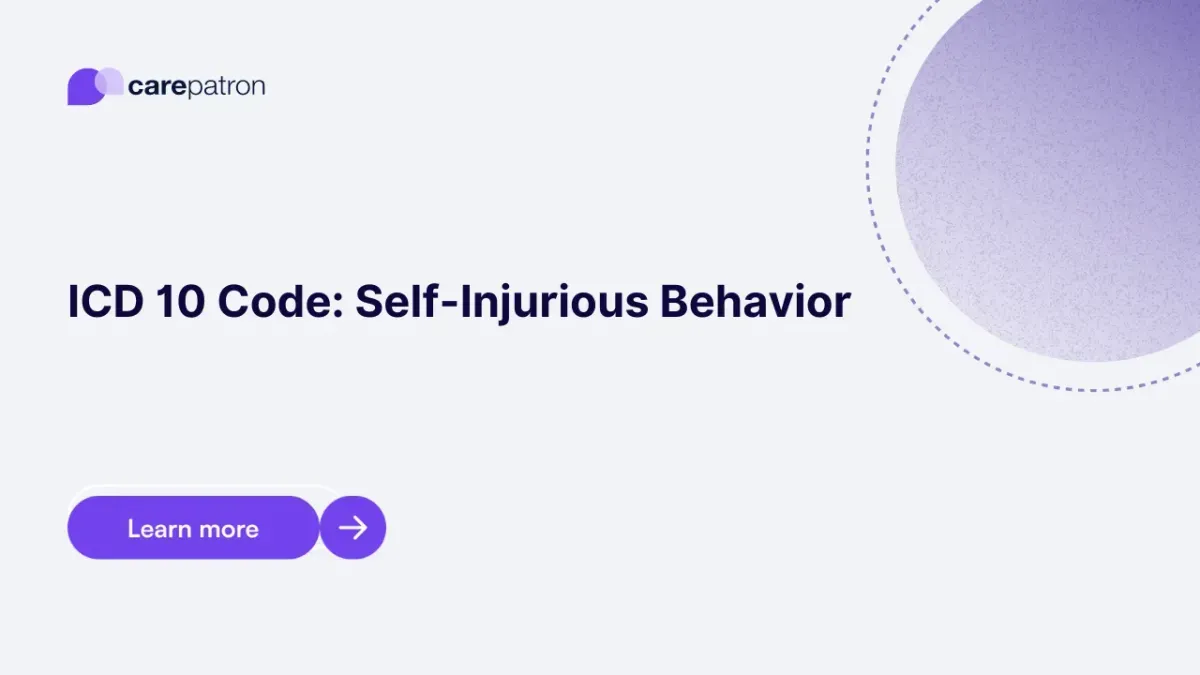
Self Injurious Behavior ICD-10-CM Codes | 2025
Read about ICD-10 codes for self-injurious behavior for accurate documentation and billing. Learn how these codes classify intentional self-harm incidents.
Use Code
Commonly asked questions
Diagnosing self-harm involves looking for signs like cuts, burns, carving words into the skin of various body parts, or head banging, which can result from painful emotions or physical pain. During the initial evaluation, a healthcare provider will assess the severity and underlying causes of the behavior.
Responding to self-injurious behavior involves staying calm and offering support to help the person manage their emotional or physical pain. It's important to connect them with therapy or other resources to address the root cause of the behavior, especially if there is a history of a suicide attempt.
You can support a patient with self-injurious behavior by helping them find healthy ways to cope, like journaling, art, or physical activity. Encourage them to talk to a trusted adult or involve a family member so they don’t feel alone in managing their struggles.
EHR and practice management software
Get started for free
*No credit card required
Free
$0/usd
Unlimited clients
Telehealth
1GB of storage
Client portal text
Automated billing and online payments
